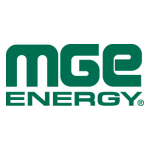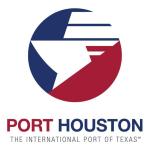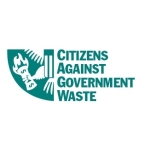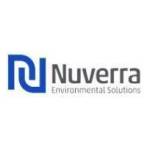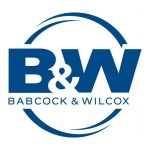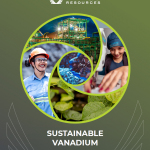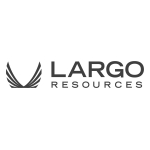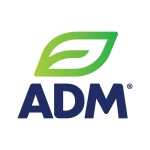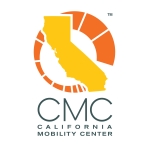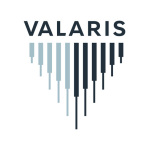-
Delivered solid financial and operational performance, including 13% sequential revenue growth globally
-
Achieved substantial growth in Well Testing and Appraisal Services and Production Services, capitalizing on improving industry fundamentals
-
Advanced pending combination with Frank’s International N.V. (NYSE: FI) to create a new global leader in energy services; transaction on-track to close in Q3 2021
HOUSTON--(BUSINESS WIRE)--Expro Group Holdings International Limited (the “Company” or “Expro”) today reported financial and operational results for the three and six months ended June 30, 2021. Expro’s total revenue for the second quarter of 2021 was $176.3 million, compared to revenue of $156.3 million in the first quarter of 2021, an increase of 13% sequentially. The Company’s net loss for the second quarter of 2021 was $8.4 million compared to a net loss of $20.4 million for the first quarter of 2021.
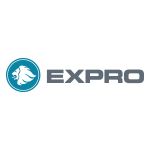
Adjusted EBITDA of $26.3 million increased 58% sequentially, driven by higher revenue, a more favorable activity mix and lower corporate costs.
Mike Jardon, Expro’s Chief Executive Officer, said, “Expro delivered solid performance in the second quarter as our broad portfolio of services, global operating footprint and continued cost and capital discipline enabled us to effectively manage and mitigate ongoing industry headwinds related to the pandemic.
“Financial highlights for the second quarter included strong sequential improvement in our ESSA and Asia regions, which both grew revenue approximately 22% as demand increased for production optimization services. In ESSA, our growth largely reflected increases in core well test and subsea activity, and in Asia our performance reflected strong demand across most services and in most of the markets we serve. Overall, Well Testing and Appraisal Services and Production Services each grew revenue 18% sequentially, largely because of an increase in brownfield enhancement activity and our team’s ability to deliver cost-effective, innovative solutions to customers.
“Through six months, we are generally on track with our full year expectations for 2021. Our current outlook for the third quarter of 2021 is for sequential revenue growth of approximately 15% and Adjusted EBITDA of approximately 15% of consolidated revenue.
“Thanks to the hard work, expertise and commitment of our talented employees, as well as our leading technology platform, we continued to advance our capabilities and deliver differentiated services and solutions that safely enhance our customers’ operational efficiency and improve the sustainability of both Expro’s and our customers’ operations. For example, Expro employed its unique CoilHose intervention system to initiate production by unloading heavy completions fluids from a highly deviated well in Asia. This solution successfully delivered both time and cost efficiencies to the client. Additionally, the compact system footprint and associated ease of logistics resulted in a significant improvement in the environmental impact of the operations as compared with traditional solutions. We are committed to further advancing our energy transition technology portfolio and ongoing sustainability initiatives by prioritizing the development of faster, lighter, more automated operations.
“Also during the second quarter, we achieved an industry first by deploying our unique OctopodaTM annulus intervention system to a depth of 300 meters in the C annulus of a well in Latin America. This system successfully introduced a plug in the annulus which restored casing integrity and enabled production to be safely resumed from the well. We are very excited about the potential of Octopoda™ as it will allow customers to, cost effectively restore well integrity, resume production and reduce fugitive gas emissions from wells.
“Approximately 40% of our research and development spending in 2021 is targeted to help customers achieve their carbon reduction objectives. We are dedicated to driving operational efficiency, reducing the environmental impact of our operations and, through our clearly defined strategy, achieving a 50% reduction in CO2e by 2030 and net zero by 2050.
“We are seeing strong signals of a multi-year recovery, which is expected to gradually gain traction as 2021 progresses. While many of our customers’ near-term focus may remain on maximizing their investments in existing well stock, we believe the low level of investment in new oil supply in recent years will result in new FIDs and sustained growth in all of our businesses and across all geo-markets. In recent years, the majority of Expro’s business has been driven by our customers’ production optimization efforts and their operational expenditures more so than their drilling-related activities and capital expenditures. As a result (and despite the possibility of continuing headwinds related to the pandemic), we currently expect at least modest revenue and margin momentum for Expro over the next couple of quarters, driven by an overall increase in international activity, and positive trends in well testing and production services and well intervention and integrity services, in particular. Beyond the next couple of quarters, an expected recovery in offshore development across geographies reinforces our confidence that Expro is well-positioned for sustained growth, which we believe will be driven by increasing demand for subsea well access services and more complex well construction services, respective strengths of Expro and Frank’s International with whom we announced a definitive merger agreement on March 11, 2021.
“Expro ended the first half of 2021 in a strong financial position with no debt, ample available liquidity and an outlook for sustainable free cash flow. Driven by performance and powered by our people, we remain confident in our ability to deliver and we expect to further benefit as we progress through a multi-year cyclical recovery and join together with Frank’s International.”
Segment Results
Europe and Sub Sahara Africa (ESSA)
ESSA revenue totaled $65.2 million during the three months ended June 30, 2021, compared to $53.6 million during the three months ended March 31, 2021, and $53.2 million during the three months ended June 30, 2020. The sequential and year-over-year improvement in ESSA revenue was primarily driven by higher well testing and appraisal services revenue in Norway, the United Kingdom, Mozambique and Angola, and higher production services revenue in Nigeria.
Segment EBITDA during the three months ended June 30, 2021 totaled $10.3 million, or 16% of segment revenue, compared to $5.4 million, or 10% of segment revenue, during the three months ended March 31, 2021, and $9.4 million, or 18% of segment revenue, during the three months ended June 30, 2020. The sequential increase in Segment EBITDA and Segment EBITDA as a percentage of segment revenue (“Segment Margin”) was driven by an increase in customer activity levels and a more favorable activity mix. Lower Segment EBITDA and Segment Margin year-over-year reflects a less favorable activity mix, particularly in Europe, despite the year-over-year increase in segment revenue.
Asia
Asia revenue for three months ended June 30, 2021 totaled $38.0 million, compared to $31.1 million for the three months ended March 31, 2021, and $37.0 million for the three months ended June 30, 2020. The sequential increase in Asia revenue was primarily driven by higher subsea, completion and intervention services revenue in Brunei and Australia. In Brunei, we are in the start-up phase of a multi-year well intervention campaign. For Australia, results benefitted from a generally higher level of customer activity and higher well testing services revenue.
Segment EBITDA for the three months ended June 30, 2021 totaled $8.3 million, or 22% of segment revenue, compared to $5.2 million, or 17% of segment revenue, for the three months ended March 31, 2021, and $9.2 million, or 25% of segment revenue, for the three months ended June 30, 2020. The sequential increase in Segment EBITDA and Segment Margin was driven by an increase in segment revenue during the three months ended June 30, 2021 and a more favorable business mix. Lower Segment EBITDA and Segment Margin year-over-year reflects a less favorable activity mix and higher support costs related to start-up costs on new projects.
Middle East and North Africa (MENA)
MENA revenue totaled $42.5 million for the three months ended June 30, 2021, compared to $41.2 million for the three months ended March 31, 2021, and $48.8 million for the three months ended June 30, 2020. Driving the sequential increase in segment revenue during the second quarter of 2021 was higher subsea, completion and intervention services revenue in Qatar and Algeria. The year-over-year decrease in MENA revenue was primarily driven by lower well testing services revenue in Algeria and Egypt as a result of lower activity levels, partially offset by increase in subsea, completion and intervention services revenue from a new project in Qatar.
Segment EBITDA for the three months ended June 30, 2021 totaled $14.1 million, or 33% of segment revenue, compared to $15.1 million, or 37% of segment revenue, for the three months ended March 31, 2021, and $21.5 million, or 44% of segment revenue, for the three months ended June 30, 2020. The sequential and year-over-year decrease in Segment EBITDA and Segment Margin was driven by lower activity on certain higher margin projects resulting in a less favorable activity mix.
North and Latin America (NLA)
NLA revenue totaled $30.6 million for the three months ended June 30, 2021, compared to $30.4 million for the three months ended March 31, 2021, and $26.2 million for the three months ended June 30, 2020. The sequential improvement in NLA revenue was primarily driven by higher subsea, completion and intervention services revenue in Argentina, reflecting a strong recovery in activity following COVID-19 related project delays in 2020, and higher well testing services revenue in Mexico and the Gulf of Mexico, which were largely offset by lower subsea, completion and intervention services revenue in the Gulf of Mexico from lower customer activity. The year-over-year improvement in segment revenue was primarily driven by higher well testing revenues in Mexico, higher subsea, completion and intervention services revenue in Argentina and Columbia, partially offset by lower well testing and appraisal services revenue generated by Expro’s relatively small North American land operations, reflecting lower customer activities and the non-repeat of power chokes equipment sales as a result of Expro’s disposition of its power chokes business in the fourth quarter of 2020.
Segment EBITDA for the three months ended June 30, 2021 totaled $3.4 million, or 11% of segment revenue, compared to $2.4 million, or 8% of segment revenue, for the three months ended March 31, 2021, and $(1.3) million, or (5%) of segment revenue, for the three months ended June 30, 2020. The sequential and year-over-year increase in Segment EBITDA and Segment Margin was driven by an increase in revenue, a more favorable activity mix and various cost reduction initiatives undertaken within the region.
Pending Combination with Frank’s International
As previously announced, Expro has entered into a definitive agreement with Frank's International (NYSE: FI) pursuant to which the companies will combine in an all-stock transaction to create a new global leader in energy services. The transaction unites two established industry players with a broad range of complementary, highly specialized equipment and services across well construction, well flow management, subsea well access and well intervention and integrity to provide customers with cost-effective, innovative solutions across the well lifecycle.
In regard to the pending business combination with Frank’s, Mr. Jardon commented, “We continue to make significant progress toward completing the Frank’s transaction in the third quarter of 2021. The combination will create a larger, stronger company, with enhanced scale, through-cycle resiliency and a strong financial profile to accelerate sustainable growth, improve profitability and enhance long-term value. Given the success of our integration planning process to date, and the ongoing industry recovery, we are confident in our ability to achieve our previously announced synergy targets while realizing the significant upside potential of the combined company. We look forward to unlocking substantial value by rationalizing support functions and rationalizing facilities, and by capitalizing on significant growth opportunities resulting from complimentary capabilities, customer relationships and operating footprints.”
Other Financial Information
Cash flow from operations decreased to $(7.2) million during the second quarter of 2021 from $9.6 million during the first quarter of 2021, primarily driven by increases in net working capital, which is expected to at least partially reverse during the second half of 2021. Adjusted operating cash flow decreased to $(2.9) million during the second quarter of 2021 from $15.6 million during the first quarter of 2021.
Capital expenditures related to property, plant and equipment totaled $18.5 million and $37.6 million, respectively, for the three and six months ended June 30, 2021. Capital expenditures continue to trend downwards from 2019-2020 levels which included approximately $32 million of capital expenditures related to new well intervention and subsea well access technologies, with management focused on maximizing utilization of our existing assets and, where practical, limiting new capital expenditures. Expro continues to plan for capital expenditures during 2021 in the range of $70 to $75 million.
As of June 30, 2021, the Company’s consolidated cash and cash equivalents (including restricted cash) totaled $84.3 million. The Company had no outstanding debt as of June 30, 2021. The Company’s liquidity as of June 30, 2021, totaled $184.3 million, including cash and cash equivalents ($82.4 million), restricted cash ($1.9 million) and availability under the Company’s revolving credit facility ($100.0 million).
Income tax expense for the three months ended June 30, 2021 was $0.7 million compared to $2.5 million for the three months ended March 31, 2021. The change in income taxes was primarily driven by the geographical mix of income.
The financial measures provided that are not presented in accordance with U.S. generally accepted accounting principles (“GAAP”) are defined and reconciled to their most directly comparable GAAP measures. Please see “Use of Non-GAAP Financial Measures” and the reconciliations to the nearest comparable GAAP measures.
Expro defines Adjusted EBITDA as net (loss) income adjusted for (a) income tax (benefit) expense, (b) depreciation and amortization, (c) impairment charges, (d) severance and other charges, net, (e) reorganization items, net, (f) merger and integration costs, (g) other (income) expenses, net, and (h) interest and finance charges (income), net. Adjusted EBITDA margin reflects Expro’s Adjusted EBITDA as a percentage of revenues. Segment EBITDA is defined as Segment Revenue less direct costs and support costs attributable to the segment and excludes transactions not related to the segment’s core cash operating activities and corporate costs. Segment Margin is Segment EBITDA divided by Segment Revenue, expressed as a percentage.
Expro defines Adjusted Operating Cash Flow as net cash provided by operating activities adjusted for cash paid during the period for interest, net, severance and other charges and merger and integration costs. Expro defines Cash Conversion as Adjusted Operating Cash Flow divided by Adjusted EBITDA.
About Expro
Expro is a provider of well flow optimization services, combining technology with high quality data across well flow management, subsea well access, well intervention and production solutions, with a specific focus on offshore, deepwater and other technically challenging environments. Expro provides well flow management services in many of the world’s major offshore and onshore basins and has nearly 50 years of experience assisting its customers in all aspects of well management, from exploration and appraisal through to mature field production optimization and eventual well abandonment. Founded in 1973, Expro has approximately 4,000 employees and 900 contractors and provides services to leading exploration and production companies in both onshore and offshore environments in approximately 50 countries with over 100 locations. Additional information is available on the company’s website, www.exprogroup.com.
Forward Looking Statements
This presentation and the related discussion may reference "forward-looking statements" within the meaning of the safe harbor provisions of the U S Private Securities Litigation Reform Act of 1995. Examples of forward-looking statements include, among others, statements we may make regarding expectations relating to a market recovery and the timing and duration thereof, future operating results, levels of capital expenditure, cashflow, order backlog, liquidity, business strategy, market conditions, prospects for growth and CO2e reductions. Forward looking statements are neither historical facts nor assurances of future performance. Instead, they are based only on our current beliefs, expectations and assumptions regarding the future of our business, future plans and strategies, projections, anticipated events and trends, the economy and other future conditions. Because forward looking statements relate to the future, they are subject to inherent uncertainties, risks and changes in circumstances that are difficult to predict and many of which are outside of our control. Our actual results and financial condition may differ materially from those indicated in the forward-looking statements. Therefore, you should not rely on any of these forward-looking statements. Important factors that could cause our actual results and financial condition to differ materially from those indicated in the forward looking statements include, among others, future market conditions, oil and natural gas demand and production growth, oil and natural gas prices, volatility in the capital markets, availability of sufficient liquidity to fund our business operations, political, economic and regulatory uncertainties in international operations, uncertainties related to the merger with Frank’s, the ability to develop new technologies and products, the ability to protect intellectual property rights, the ability to employ and retain skilled and qualified workers, the level of competition in the Company’s industry, global or national health concerns, including health epidemics and pandemics such as COVID 19, the impact of current and future laws, rulings, governmental regulations, accounting standards and statements and related interpretations and other guidance and other risks and uncertainties disclosed in the proxy statement/prospectus filed with the Securities and Exchange Commission with respect to our merger with Frank’s. Any forward-looking statement made by us is based only on information currently available to us and speaks only as of the date on which it is made. We undertake no obligation to publicly update any forward-looking statement, whether written or oral, that may be made from time to time, whether as a result of new information, future developments or otherwise.
Use of Non-GAAP Financial Measures
This press release and the accompanying schedules include the non-GAAP financial measures of Segment EBITDA , Segment Margin, Adjusted EBITDA, Adjusted EBITDA Margin, Adjusted Operating Cash Flow and Cash Conversion. Expro provides reconciliations of net (loss) income, its most directly comparable financial performance measure, to Adjusted EBITDA. Expro also provides a reconciliation of Adjusted Operating Cash Flow and Cash Conversion to net Cash Provided by (Used in) Operating Activities, its most directly comparable liquidity measure. Segment EBITDA, Segment Margin, Adjusted EBITDA, Adjusted EBITDA Margin, Adjusted Operating Cash Flow and Cash Conversion are used as supplemental financial measures by Expro’s management and by external users of its financial statements, such as investors, commercial banks, research analysts and others. These non-GAAP financial measures allow Expro’s management and others to assess Expro’s financial and operating performance as compared to those of other companies in its industry, without regard to the effects of its capital structure, asset base, items outside the control of management and other charges outside the normal course of business. These metrics are commonly employed by financial analysts and investors to evaluate the operating and financial performance of the Company from period to period and to compare it with the performance of other publicly traded companies within the industry. Segment EBITDA, Segment Margin, Adjusted EBITDA, Adjusted EBITDA Margin, Adjusted Operating Cash Flow and Cash Conversion have limitations as analytical tools and should not be considered in isolation or as a substitute for analysis of the Company’s results as reported under GAAP. Because Segment EBITDA, Segment Margin, Adjusted EBITDA, Adjusted EBITDA Margin, Adjusted Operating Cash Flow and Cash Conversion may be defined differently by other companies in the Company’s industry, its presentation of Segment EBITDA, Segment Margin, Adjusted EBITDA, Adjusted EBITDA Margin, Adjusted Operating Cash Flow and Cash Conversion may not be comparable to similarly titled measures of other companies, thereby diminishing their utility.
Please see the accompanying financial tables for a reconciliation of these non-GAAP measures to their most directly comparable GAAP measures.
EXPRO GROUP HOLDINGS INTERNATIONAL LIMITED
CONDENSED CONSOLIDATED STATEMENTS OF OPERATIONS
(In thousands, except per share data)
(Unaudited)
|
|
|
|
|
|
|
|
Three Months Ended
|
|
Six Months Ended
|
|
June 30,
|
|
March 31,
|
|
June 30,
|
|
June 30,
|
|
June 30,
|
|
2021
|
|
2021
|
|
2020
|
|
2021
|
|
2020
|
|
|
|
|
|
|
|
|
|
|
|
|
|
|
|
Total revenue
|
$
|
176,251
|
|
|
$
|
156,295
|
|
|
$
|
165,130
|
|
|
$
|
332,546
|
|
|
$
|
371,830
|
|
Operating costs and expenses:
|
|
|
|
|
|
|
|
|
|
|
|
|
|
|
Cost of revenue (1)
|
|
(174,008
|
)
|
|
|
(164,730
|
)
|
|
|
(162,854
|
)
|
|
|
(338,738
|
)
|
|
|
(370,636
|
)
|
General and administrative (1)
|
|
(6,297
|
)
|
|
|
(6,738
|
)
|
|
|
(6,802
|
)
|
|
|
(13,035
|
)
|
|
|
(11,178
|
)
|
Impairment charges
|
|
-
|
|
|
|
-
|
|
|
|
-
|
|
|
|
-
|
|
|
|
(275,594
|
)
|
Merger and integration costs
|
|
(4,703
|
)
|
|
|
(4,823
|
)
|
|
|
-
|
|
|
|
(9,526
|
)
|
|
|
-
|
|
Severance and other charges
|
|
(1,637
|
)
|
|
|
(555
|
)
|
|
|
(4,803
|
)
|
|
|
(2,192
|
)
|
|
|
(5,863
|
)
|
Total operating costs and expenses
|
|
(186,645
|
)
|
|
|
(176,846
|
)
|
|
|
(174,459
|
)
|
|
|
(363,491
|
)
|
|
|
(663,271
|
)
|
Operating loss (1)
|
|
(10,394
|
)
|
|
|
(20,551
|
)
|
|
|
(9,329
|
)
|
|
|
(30,945
|
)
|
|
|
(291,441
|
)
|
Other income (expenses), net
|
|
387
|
|
|
|
239
|
|
|
|
(380
|
)
|
|
|
626
|
|
|
|
(1,279
|
)
|
Interest and finance (charges) income, net
|
|
(1,604
|
)
|
|
|
(1,627
|
)
|
|
|
(409
|
)
|
|
|
(3,231
|
)
|
|
|
3,244
|
|
Loss before taxes and equity in income of joint ventures
|
|
(11,611
|
)
|
|
|
(21,939
|
)
|
|
|
(10,118
|
)
|
|
|
(33,550
|
)
|
|
|
(289,476
|
)
|
Equity in income of joint ventures
|
|
3,957
|
|
|
|
4,092
|
|
|
|
2,156
|
|
|
|
8,049
|
|
|
|
6,607
|
|
Loss before income taxes
|
|
(7,654
|
)
|
|
|
(17,847
|
)
|
|
|
(7,962
|
)
|
|
|
(25,501
|
)
|
|
|
(282,869
|
)
|
Income tax (expenses) benefit
|
|
(727
|
)
|
|
|
(2,545
|
)
|
|
|
(5,377
|
)
|
|
|
(3,272
|
)
|
|
|
4,360
|
|
Net loss
|
$
|
(8,381
|
)
|
|
$
|
(20,392
|
)
|
|
$
|
(13,339
|
)
|
|
$
|
(28,773
|
)
|
|
$
|
(278,509
|
)
|
|
|
|
|
|
|
|
|
|
|
|
|
|
|
|
Loss per common share:
|
|
|
|
|
|
|
|
|
|
|
|
|
|
|
Basic and diluted
|
$
|
(0.14
|
)
|
|
$
|
(0.35
|
)
|
|
$
|
(0.23
|
)
|
|
$
|
(0.49
|
)
|
|
$
|
(4.76
|
)
|
Weighted average common shares outstanding:
|
|
|
|
|
|
|
|
|
|
|
|
|
|
|
Basic and diluted
|
|
58,489,895
|
|
|
|
58,489,895
|
|
|
|
58,489,895
|
|
|
|
58,489,895
|
|
|
|
58,489,895
|
|
Contacts
Investor contact:
Karen David-Green - Chief Communications, Stakeholder & Sustainability Officer
This email address is being protected from spambots. You need JavaScript enabled to view it.
+1 281 994 1056
Media contact:
Hannah Rumbles - Global Marketing and Communications Manager
This email address is being protected from spambots. You need JavaScript enabled to view it.
+44 1224 796729
Read full story here 



